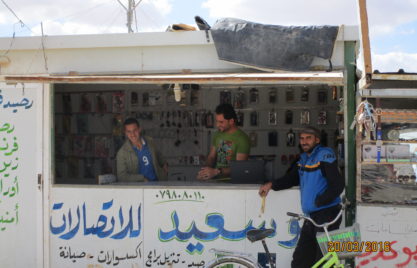The microfinance sector in Jordan has been growing strongly in recent years. The Central Bank of Jordan (CBJ) is thus taking over the lead in supervising microfinance institutions (MFIs) to assure the soundness and sustainability of the whole sector. The GIZ MFMR Programme supports the financial regulator on behalf of the EU and the German Cooperation.
Although microfinance basically obeys the same rules and regulations as banks, the microfinance business is particularly fragile. It suffers from specific credit risk of microfinance clients, the volatility of cash flows and particular market risks. Supervising and regulating microfinance institutions requires specific skills and customised tools.
The MFMR supports the CBJ in capacity building, working together with staff members of the microfinance supervision department in successfully setting up an appropriate regulatory framework, providing adequate supervisory tools and techniques for jointly reach a risk-based supervision approach.
A risk-based supervision approach implies on the one hand that the intensity of supervision depends on the individual risk of a microfinance institution and on the other hand that it is relevant for financial inclusion. In order to achieve risk-based supervision it is crucial to provide an effective off-site supervision system that is based on a reliable reporting by MFIs.
In order to understand the off-site supervision nature, one can compare it to preventive medical check-ups: Their prime objective is to preserve the health of the patient. The sooner diseases are diagnosed; the better the chances are of curing the patient. Consequently, effective preventive medical check-ups as well as off-site supervision have to be conducted regularly; not just in the case of an acute emergency.
The reporting system is intended to be as lean as possible and as comprehensive as necessary. It is fully integrated with an automated analysis system. MFIs are stated healthy, if several requirements are met including a certain risk policy; maintaining adequate loan loss allowances and being sufficiently capitalised; being profitable; and standing competition. Corresponding measurement areas of the analysis system are risks, profitability, competitiveness and operating efficiency. Client protection and outreach serve as supplementary analysis areas.
Using the off-site supervision system, the CBJ microfinance supervision team can generate assessments of the conditions of MFIs. These crucial skills are complemented by study visits to other countries, trainings in financial analysis and other topics. The reporting system is also in consultation with the microfinance sector. The CBJ is setting important cornerstones towards the supervision of the microfinance sector’s stability and client protection while moving forward financial inclusion in Jordan.
By Dr. Philipp Heldt-Sorgenfrei, Associate with the GIZ MFMR Programme



